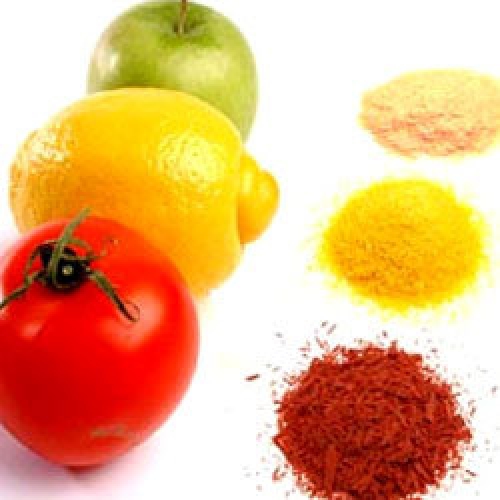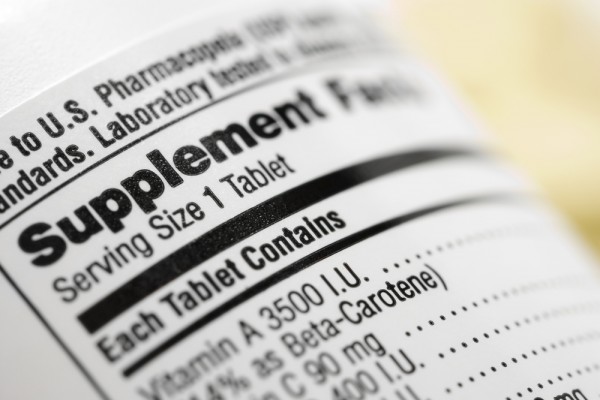Top 5 Myths About Vitamins - Don't Fall Victim to Them!
Myth #1
"Vitamins and minerals in food-based, whole-food, or RAW multivitamins are derived from fruits, vegetables and real foods"
While marketing claims often make one believe that food based vitamins are derived from real food, the reality is quite different.
Most food based vitamins on the market can be divided into two groups:
First group consists of mostly synthetic vitamins and minerals cultured with small amount of whole foods and yeast. The supplement facts table of such vitamins lists whole foods blend. You will also see a statement similar to "Nutrients are created through cultivation" or "Nutrients and herbs are cultured in organic media". This means that synthetic forms of vitamins and minerals listed on the label were combined with a minute amount of whole foods and cultured with yeast. Then the mixture was dried and put into tablets.
Second group consists of vitamins and minerals derived from yeast. Yeast is naturally rich in some B vitamins. To obtain yeast rich in other vitamins and minerals that it normally does not contain, yeast is grown in a bath of synthetic vitamins and minerals which it absorbs. After that the yeast is dried. The vitamins and minerals obtained from such dry yeast are called food based.
While vitamin companies claim that daily consumption of yeast does not cause allergic reactions, numerous anecdotal evidence suggests the opposite.

Truth: food-based vitamins are made from minute amounts of dry food plus synthetic vitamins cultured with yeast."
Myth #2
"Whole food concentrates added to multivitamins are very beneficial for your health"
Amounts of whole foods or whole food concentrates that can be added to multivitamin formulas are extremely small. On the labels you will generally see between 100mg and 1000mg food complex, which is less than half a tea spoon. How much benefit do you think one can get after eating such minute amount of dry spinach or raspberry? You would be much better off after eating a couple of fresh blueberries or a leaf of fresh spinach. These days many vitamin manufactures add dry food extracts to vitamins due to their low cost and high attractiveness for marketing. As a smart consumer, it is best to get all fruits and vegetables from your diet. If supplementation is needed, look for highly concentrated good quality whole food extracts.The label should read "standardized extract".
Truth: choose vitamin supplements with highly concentrated fruit and herbal extracts. Consume fruits and vegetables as part of a healthy diet."
- dry foods are not effective unless highly concentrated
- the size of the tablet is very small and cannot fit meaningful amounts of food ingredients

Myth #3
"The higher %DV of vitamins and minerals is in multivitamins, the better they are for you"
As with many things, more is not always better.
Long term effects of daily supplementation with megadoses of vitamins and minerals have not been sufficiently studied. Fat soluble vitamins and mineral can accumulate in the body and cause extra strain on elimination organs. Water soluble vitamins can only be absorbed in limited quantities by the body. If you start taking supplements that include megadoses of B-vitamins, notice unusually bright yellow/orange color of the urine. That is your body's way of eliminating excess and it puts unnecessary stress on kidneys.
If one desires to take high doses of vitamins and minerals it is best to do so under the guidance of a qualified health care practitioner.
Truth: for long term use choose vitamin supplements with amounts of vitamins and minerals close to RDA (recommended daily amounts)."

- excessive amounts of vitamins and minerals accumulate in the body and can be toxic
- excessive amounts of water soluble vitamins can put extra stress on liver and kidneys
Myth #4
"It does not matter if I take all my vitamin supplements at the same time or not."
Studies show that some vitamins and minerals can greatly inhibit absorption of one another. Examples include calcium and iron, magnesium and manganese, copper and zinc. To maximize absorption, these vitamins should be taken at least 3-4 hours apart from each other. There is no point in taking multivitamins if they will not be properly absorbed.
Truth: some vitamins and minerals should not be taken together. One should always pay attention to their interactions."


Myth #5
"Multivitamin supplements can be taken any time of day and with any food"
In fact, some foods can inhibit or enhance absorption of vitamins and minerals. For example, iron taken with coffee, tea or milk will be very poorly absorbed (less than 20% absorption rate). Fat-soluble vitamins, coenzyme Q10 and carotenoids taken with a light snack that does not contain fat will also be very poorly absorbed. On the other hand, vitamin C greatly enhances iron absorption and fat greatly enhances absorption of all fat-soluble nutrients. Most multivitamins on the market are best taken with breakfast or lunch. Taking standard multivitamins in the evening will often have energizing effect and is generally not recommended. Our Balanced Trio multivitamins are unique in that they are created to be taken three times a day: Morning, Mid-day and Evening. Each of the formulas is different and was specifically developed by Vital Formula's scientists for the time of day taken. Balanced Trio formulas take into account vitamin interactions and common meal content at the time of day when they are consumed.
- take energizing vitamins in the morning
- take relaxing, sleep-promoting vitamins and minerals at night

Truth: some vitamins have energizing effect on the body, while others have relaxing effect. Certain foods can inhibit or enhance absorption of specific vitamins and minerals."
Don't fall victim to these myths! Take Balanced Trio
It was formulated by taking into account latest research on vitamin interactions and dosage

Tweet